Two days ago I ran my first ever race in Manchester, England. It was, as you would expect, an eventful experience.
The Greater Manchester Marathon is ran by ten thousand people every year. I was running the marathon as part of The Crohn’s 4 Marathon Challenge: a challenge that myself and my friend Barry have set ourselves in order to raise money for Crohn’s and Colitis UK.
Preparing for the Race
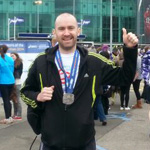
My preparation for the race was far from perfect. I pulled my hamstring around a month before the marathon. This meant that I could not do any real training in the run up to the event apart from a few short runs and one ten mile run.
When I should have been out running, I was indoors resting and icing. Yet the ten mile run I did the week before the event hinted that my general fitness had not been affected.
A few days before the event, we started loading up on carbs. This increases the amount of glycogen that is stored in your body for the event. I am unsure as to whether we did it correctly or not as I felt a bit bloated when doing it and I had never relied on extensive carb loading for my eighteen and twenty mile runs. However, the scientific studies that are available show that is is beneficial.
We travelled down to Manchester at around 2pm the day before and arrived at around 6.45pm. We stayed in an Ibis Budget hotel; a cheap hotel we booked for £30 each per night. The hotel lived up to its name of being a budget hotel with our room resembling more of a hospital room or prison cell than a hotel.
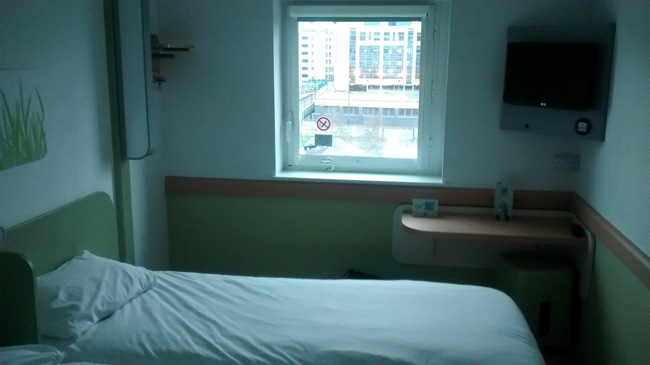
The twin beds were separated by a gap of around three inches with each mattress lying on the same bed frame. The shower was great, however the toilet was located in what appeared to be a cupboard for mops. When you sat down, your elbows almost touched the sides.
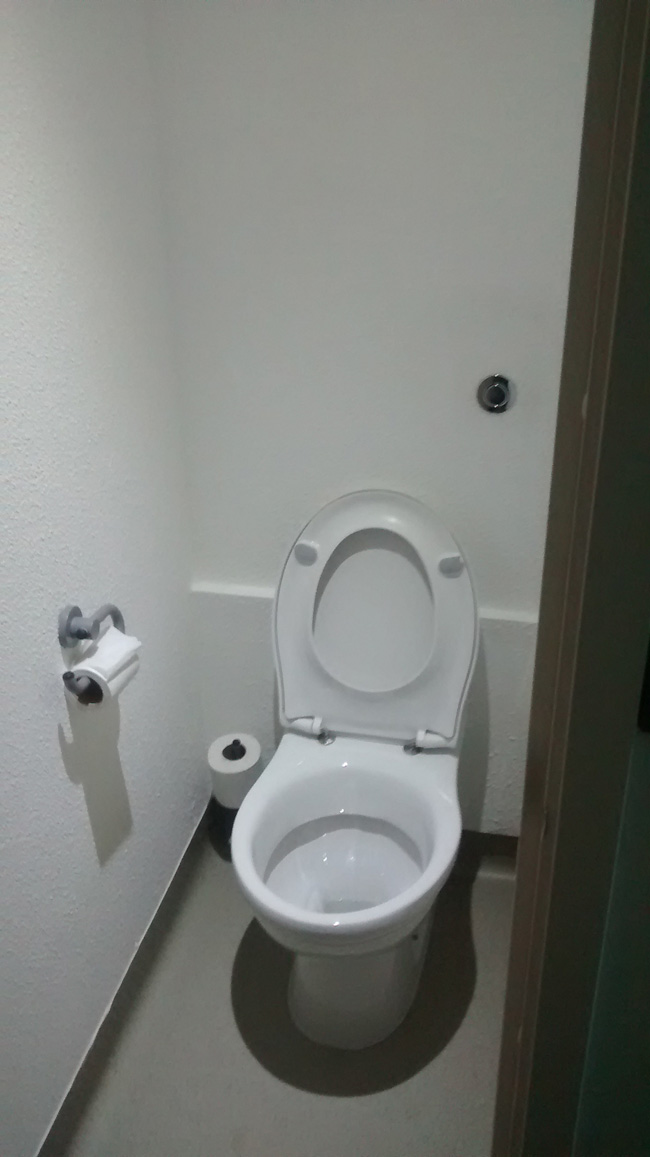
We went across the street to a small bar/restaurant. I ended up having a veggy burger and chips. I’m not sure if this is the best thing to eat the night before a marathon, but after three or four days of eating pasta, I was keen on eating something different.
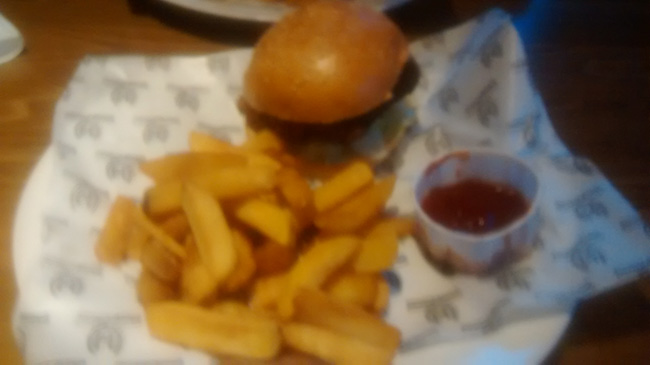
We then started getting everything arranged for the next day so that we could just wake up and leave. The first thing I had to do was pin my number onto my t-shirt.
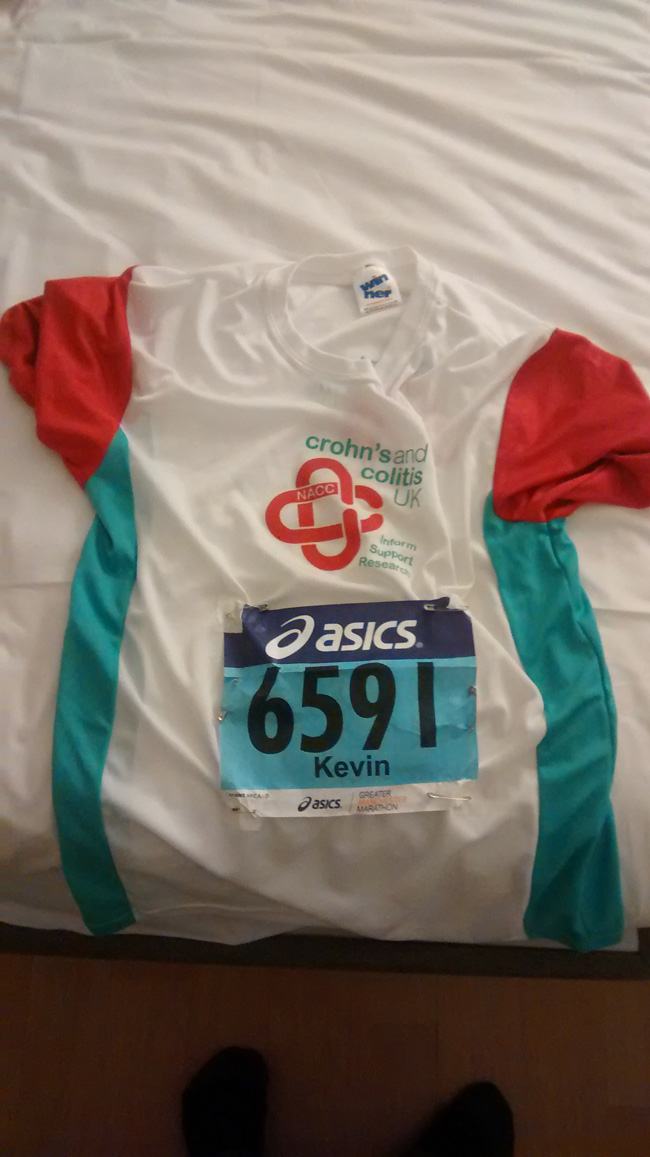
I emptied all of my pre and post marathon drinks and food onto the table. Organised chaos at its best.
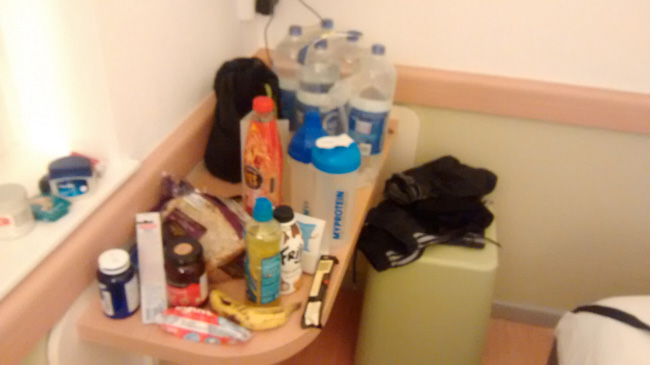
The Greater Manchester Marathon starts at Old Trafford, home to Manchester United. Our hotel was only a couple of streets away, so we did not have to concern ourselves with buses and trains on the day.
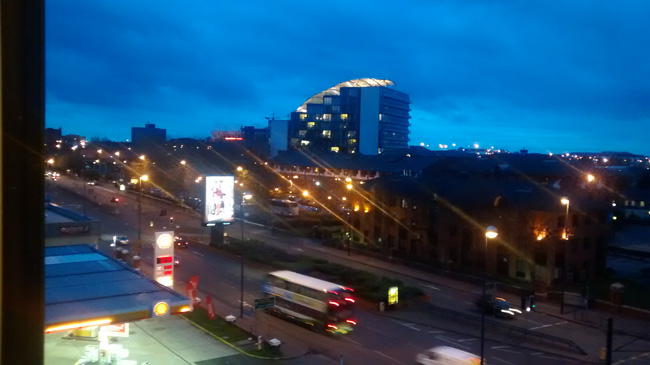
Unfortunately, we did not get a good night’s sleep. The air conditioning would not work in our room. So we ended up having to leave a window open. This resulted in a cold breeze blowing through the room’s warm heat, and the additional noise from outside was a real pain.
I am unsure as to whether this was the reason, or whether it was because of something we ate or drank; however neither of us could sleep. We ended up getting around two and a half hours sleep that night. Not exactly good preparation for our first marathon.
The Race
The one benefit to going to sleep at 2:30am and waking up at 5:30am is that you have time to get ready. We had to be at the event village for 8:30am, but we arrived around 8:00am to see what was happening.
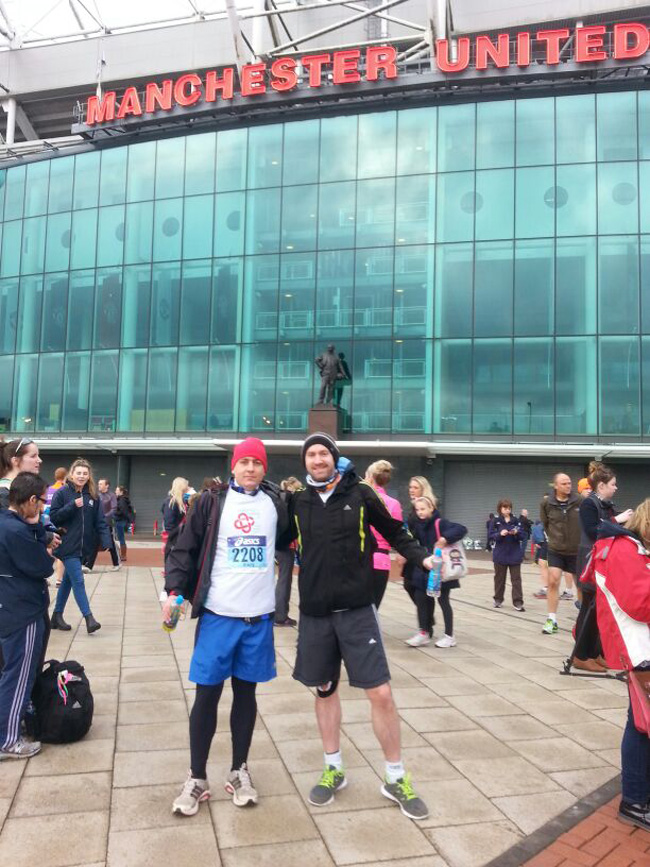
The marathon was very well organised. There was a large tent for everyone to store their bags and belongings. You simply handed your bag over and they stored it using your race number. Various food and drink shops were dotted around the place, including one for vegetarians.
There was an abundance of toilets too, however it did not seem like there were enough before it started as there queues of people outside them. Some had dozens and dozens waiting.
I had not been able to go to the toilet before the event, something which I was actually concerned about beforehand (but thankfully, it was not an issue during the race).
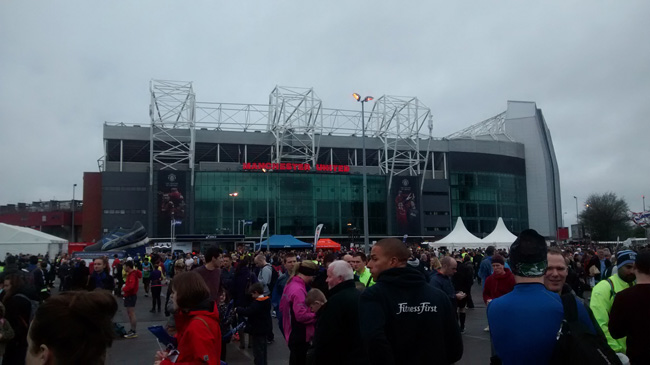
The old idiom goes that you should hope for the best and prepare for the worst. That is how I had tried to prepare. Unfortunately, it was the worst that I had to deal with.
In the first mile, my main focus was on my hamstring. I was conscious of the fact that I had not trained for a month due to pulling it. And it was only three days before that I was limping around my house because of the problem. Thankfully, I never had any major problems with my hamstring during the run. That is something I am grateful for as I was concerned this was an injury I would be dealing with in all my marathons.
I had other problems to face.
From the very start of the race, I struggled to breathe. Perhaps this was caused by me using ibuprofen over the week to reduce the inflammation in my hamstring; something which I should probably avoid due to being an asthmatic. Or perhaps it was due to the high levels of pollution Manchester experienced during the week.
Struggling to breathe is something I do experience from time to time when running, though it only happens during the first mile or two. After that, my lungs are warm and my airways are clear. That didn’t happen in Manchester. I was unable to speak to Barry when running as I could not catch a breath. My inhaler gave me temporary relief, but the problem was back after ten minutes.
We had hoped to run the race together, but we had also discussed what we would do if one of us was struggling. We had both agreed that if someone was injured or could not do it, the other person should just go on. This was the first marathon for both of us and we didn’t want to hold each other back.
Around mile six, I started struggling to keep up with our regular pace and Barry went a little bit ahead. I never caught up :(
This was also the time that I started having pain in my right foot. It was the kind of pain that you feel after walking too much; yet I was feeling this after just six miles, which was strange as I had been running fifty miles a week for months and never had that pain.
I plodded along.
A bigger concern was my temperature. I was burning up badly from around mile two. I put this down to what I was wearing. I had three layers on: a dryfit Nike t-shirt, a lightweight Nike jacket over the top for carrying my energy gels, and my charity t-shirt over the top.
Do you know when people talk about hitting the wall when running the marathon? Well, I hit the wall after six miles. I had very little left. It felt like I was running like a zombie.
A blister that had came up during the early part of the race had popped just before I passed the half marathon point (I later found that Barry was only 56 seconds ahead of me at this stage). At this same point, I took my t-shirt and jacket off and put my t-shirt back on. I then tied the jacket around my waist. Unfortunately, that was not a good solution. Due to the gels in the pockets, the jacket continued to fall down and sway from side to side because of the weight in the pockets. So I put the jacket back on, unzipped. This reduced my temperature a little.
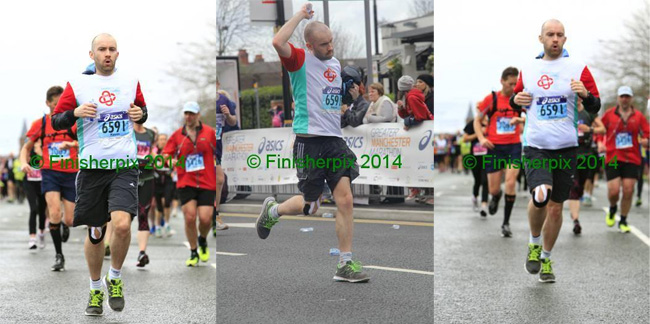
I continued to run around nine minute miles. Around mile fourteen, I noticed the pace runner for a four hour marathon was right behind me. That meant that if I dropped behind him, I would not complete a four hour marathon. Knowing this gave me a small physiological boost to keep going.
The boost was short lived.
I managed to run beside the pace runner around three or four miles. By this point, I was in a bad way. I was sweating profusely and my heart rate was very high. I was genuinely getting concerned for my own health. I am someone who has gotten injured multiple times in the past by not listening to my body and going on regardless; so for me to get concerned like this illustrates how bad it was.
I started feeling a bit dizzy and felt my eyes close at one point as if I was going to feint. So I moved to the left hand side of the road. Then I stopped.
I cannot fully describe the disappointment and frustration I felt when I did this. I was really ashamed at myself and angry at myself for not going on. The truth is that I could not go on. I physically could not go on.
I proceeded to walk and jog the next two or three miles. Watching the four hour pacer jog away into the distance was disheartening as I knew that I had failed my challenge of running the marathon in four miles.
During this time, I was not even sure if I would finish, however my breathing had come back under control, so I could breathe normally. The problem is that the pain in my right foot was much more severe. Therefore, even though my lungs felt much better, I could not physically run fast as the pain in my foot was so bad. Technically, if the pain in the foot was not there, I could have finished under four hours (well, that’s my theory!).
After walking and jogging, I started running at a slow pace of around twelve to thirteen minute miles (this was around mile twenty). I was still running in empty, yet I really enjoyed this part of the race. During most of the race, I had a high temperature and struggled to breathe. It was exhausting. And even though I had a lot of my pain in my foot, I could enjoy the race in the way I should have from the start.
At around twenty four miles, I saw a lady who was around sixty five years old run past me. I won’t lie to you; that annoyed me!!
At around twenty five and a half miles, I saw the pace runner for a 4:15 hour marathon. This spurred me on during the last half mile and during the final few hundred metres, I sprinted through the pain and overtook everyone there.
I finished in 4:15:01.
I thought crossing the finishing line would feel amazing, but I just felt frustrated about everything that happened. We had been on course to run the marathon in between 3:40 or 3:50; perhaps even quicker. I had fell very short of that target.
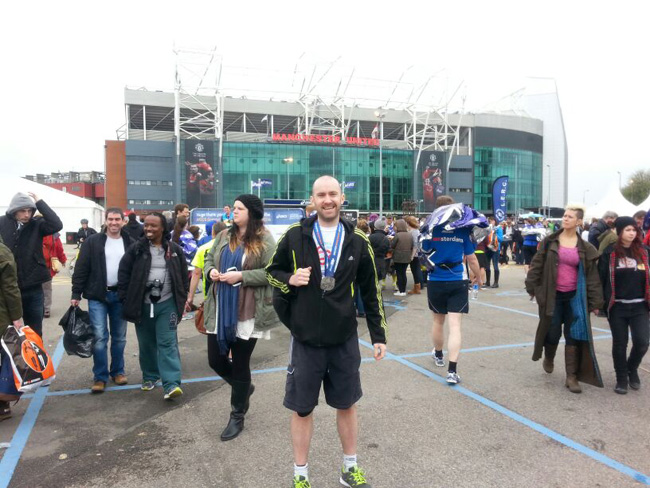
Barry finished twenty minutes before me in 3:54:40. It was a great effort by him. Like myself, he had very little sleep the night before. He was also having problems with his hips over the last few weeks and had extremely tight calves during the latter half of the race.
He also had to stop and jog slower, but managed to keep it going and finished the race in under four hours.
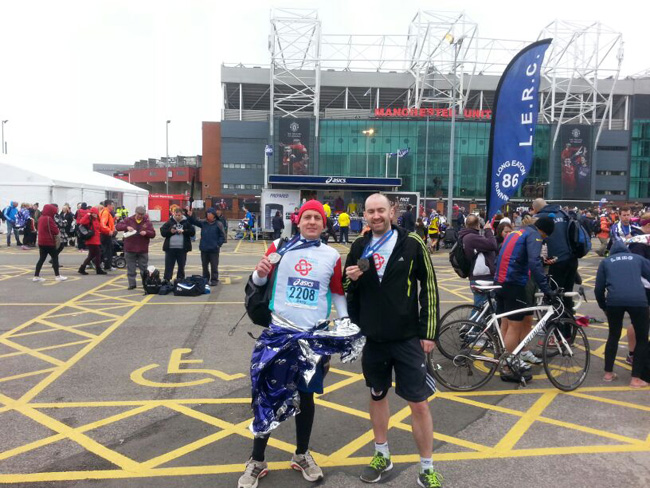
I experienced a whole new level of exhaustion after the race. I have exercised all my life and had sparring sessions in Taekwondo that were so hard that I would just lean against the wall to save energy; however this was a whole new level. It took an hour or so before I started feeling normal again.
Throughout the whole race, the people in Manchester were fantastic. The vast majority of the race had people standing by the sides supporting you. People would shout things such as “Come on Kevin” and “Keep going Kevin, you can do it” (note: everyone’s names are underneath their number). As cheesy as that sounds, when you are close to mentally breaking, it helps. It helps a lot.
The people who were watching were also offering sweets during the race and kids would stick out their hands for high fives. I have no doubt that this happens at every marathon, but it was the first time I had experienced it. It was little things like that which made the event enjoyable (despite my frustrations).
It was also great to see what other people were doing for the marathon. In addition to soldiers doing the marathons with heavy backpacks and people running in costumes such as beer bottles, I saw a guy at the very start doing the race on a pogo stick. The man, Jack Sexty, became the first person to complete a marathon on a pogo stick. He finished the race in sixteen hours. Unbelievable!
Post Result Pain
Following the marathon, I couldn’t walk properly. I was unable to put pressure on my right foot.
I managed to hobble into Manchester city centre to meet my friends Dave and Greg. It became clear that the pain was getting worse as the night went on. Thankfully, I was only out for a few hours and by 8:20pm, I had returned to the hotel.
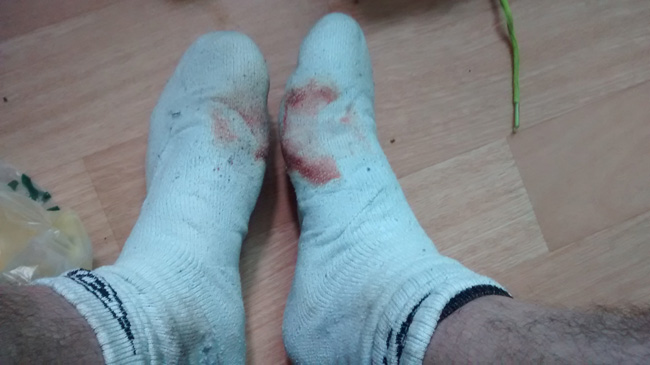
By around 10pm, I was in severe pain. It was so bad I had to crawl to the bathroom on my ass just to pee! I then spent the whole night squirming in pain due to the throbbing pain in my foot. It was also spasming, and I had no painkillers to relieve the pain.
If my awful hotel had a phone to call reception, I would have called them and asked them to phone an ambulance for me. I know that sounds a bit extreme for a foot injury, however the sharp pain I was experiencing was awful. It felt as bad as the pain I had experienced years ago with my neck injury.
I eventually collapsed through exhaustion and got a couple of hours of sleep. The pain was a little less severe in the morning, but I still could not walk properly. Barry had to help me out of the car at one point and it took me about four times as long to walk anywhere.
Following the marathon, I had no real appetite. This was no different in the morning, however I forced myself to eat something as I knew that my body needed energy.
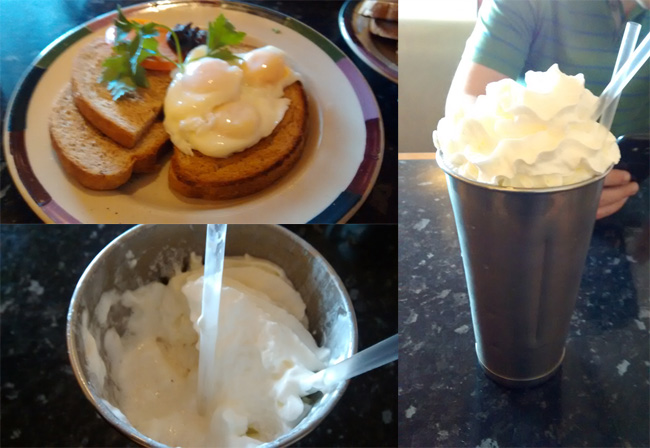
We then made our journey back to Scotland. Due to traffic roadworks and an accident, Google Maps rerouted us three times, which resulted in us driving about fifteen miles, getting sent back down the same way and then going back. Thanks Google.
It was not long before we were back into the land of Nessie.
When we stopped at Gretna services, Barry had to physically help me get out the car as I couldn’t do it on my own. I was like an old man!
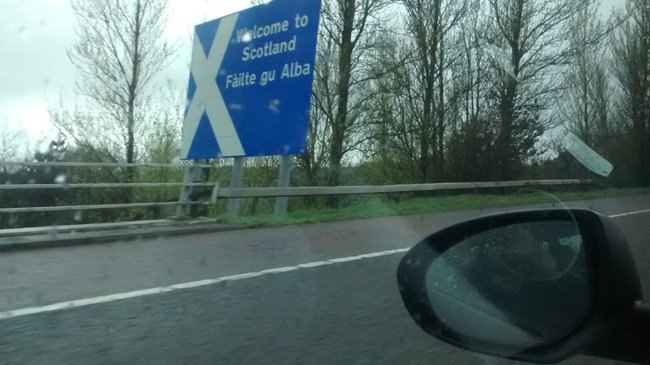
Barry dropped me off at my local hospital, however they advised that the waiting time was at least four hours. This was around 5:30pm. After very little sleep, and running twenty six point two miles on an empty tank, I decided going home was the best option. I ended up sleeping for around ten hours or so.
I got up this morning and headed down to the hospital. The nurse quickly diagnosed that I have cellulitis: a severe inflammation of the skin that is usually caused by cuts, blisters, burns or bites.

Cellulitis causes severe swelling and fever; which explains why I was burning up during the first twenty miles of the race
I was clearly suffering from fever after the race after the race. I said to Barry how cold it was a few times and he looked at me as if I was crazy and told me it was warm.
I am still unsure how I caught it and when. The nurse believes that the cause of the issue is my running shoe. I am not sure. Looking back, I felt a bit crappy all day on Saturday. At the time, I put this down to all the food and drink we had to eat to carb load. And despite getting much sleep on Friday night, I could not get to sleep the following night. So I may have been suffering from cellulitis on the day before.
I am on antibiotics for a week to clear the inflammation and remove any bacteria that is there. I should then be ok to start training again (hopefully!). Once the problem has healed, I am going to head into a proper running shop in Glasgow and have myself fitted properly for a good pair of running trainers. Perhaps the wrong running shoe is not what caused cellulitis, though my black toes and frequent blisters highlight that something is wrong. Therefore, it is time to change them.
The diagnosis of cellulitis explains most of the problems I experienced during the race such as my high temperature and my painful right foot. Running with unsuitable footwear would explain why I got blisters.
I am unsure as to whether ibuprofen was what caused me breathing difficulties. It was my immediate thought during and after the race, since people who suffer from asthma are known to experience problems with it; however it may have been caused by the fever I had.
Ideally, I should take ibuprofen before a run so I can see whether it does affect me greatly. I’ll probably play it safe with my next marathon in Belfast and not use it, just to be sure that it isn’t a factor.
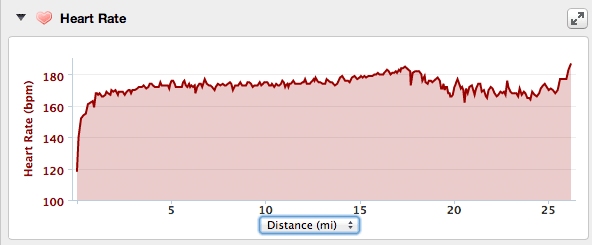
I purchased the soft strap Garmin heart rate monitor last week so that I can start monitoring my heart rate in big events and in interval training. The graph above illustrates how high my heart rate was during the race. It was never at a comfortable level.
As I am sure you are aware, marathons put a lot of stress on your heart. My friend Kenny, who is a doctor, said that you run the risk of arrhythmia if you put your heart under that level of stress. This can increase the risk of a heart attack.
I am going to continue to monitor my heart rate. I was never interested in monitoring my heart rate on my slower runs, however I want to get a better understanding of what my heart rate is in all situations. That will help me to slow down or stop if my heart rate does get too high.
The Manchester Marathon was my first race using the heart rate monitor; therefore, I was not fully aware of the risk I was taking. The only other time I monitored my heart during a run, I was around 160 beats per minute; and I was running much faster. In contrast, my overall average heart rate during the Manchester marathon was 172 bears per minute.
Final Thoughts
All in all, I’m still incredibly disappointed by my result as I was about thirty minutes slower than I aimed for. Anything that could go wrong for me did go wrong.
I always wanted my first marathon to be a good one, so I am disappointed that I did not get a good time. I am glad that I managed to finish the race though. During the latter half of the race I saw a lot of people on the sidelines with pulled hamstrings, calves etc. I can only empathise with people who had to pull out because of something like that as I know the how hard it was for me; and my injury never stopped me altogether. If I had pulled my hamstring or calf, I would have struggled to even walk.
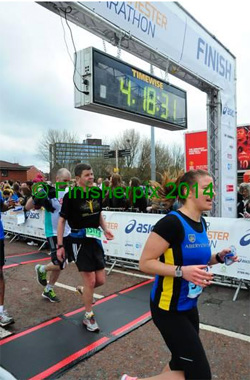
The diagnosis of cellulitis alleviates some of my own frustrations as I know I have the ability to do better in four weeks time in Belfast. One month ago we did our twenty mile run at 8:25 minute miles. When I did that run, I felt like I could do another six miles at the same pace. Even if I had dropped that pace to nine minutes per mile over the last six miles, I would have still have got a time of 3 hours and forty four minutes.
Despite the bad result and pain afterwards, I feel it was a great experience.
For the first twenty four hours after the marathon, the thought of doing another one in four weeks was the last thing on my mind. However, as my fatigue fades, and my foot gets better, I’m starting to look forward to the next one on 5th May. We made a lot of silly little mistakes in our preparation, and I had a bit of bad luck along the way, but I guess that is part and parcel with your first race.
Over the next four weeks I need to ensure my foot gets better, buy suitable running trainers, and make sure I get out there and keep my fitness up. My marathon journey, after all, has only just begun.
Finally, thanks to everyone who donated to our JustGiving page at http://www.justgiving.com/crohns4marathonchallenge.
The donations we have received from friends and families so far is unbelievable. I cannot thank you all enough.
For any of you thinking of doing a race, my recommendation is to get motivated and do it. It does not matter if it is a 10K, half marathon, or a full marathon. You will face trials and tribulations along the way; but it’s worth it. It is a good excuse to get off your ass and get healthier and a great way to raise money for charity.
I truly believe anyone can do it. At the end of last July (i.e. nine months ago), I went out for my first run after returning from South America. I ran about a mile and a half and then had to stop and walk the rest as my fitness was so bad. A few weeks later I had upped my miles to a half marathon. You just need to persevere and make running a habit.
I will give you all an update on my challenge next month. Belfast is apparently a tougher marathon, but I should hopefully break the four hour mark.
Thanks for reading,
Kevin
